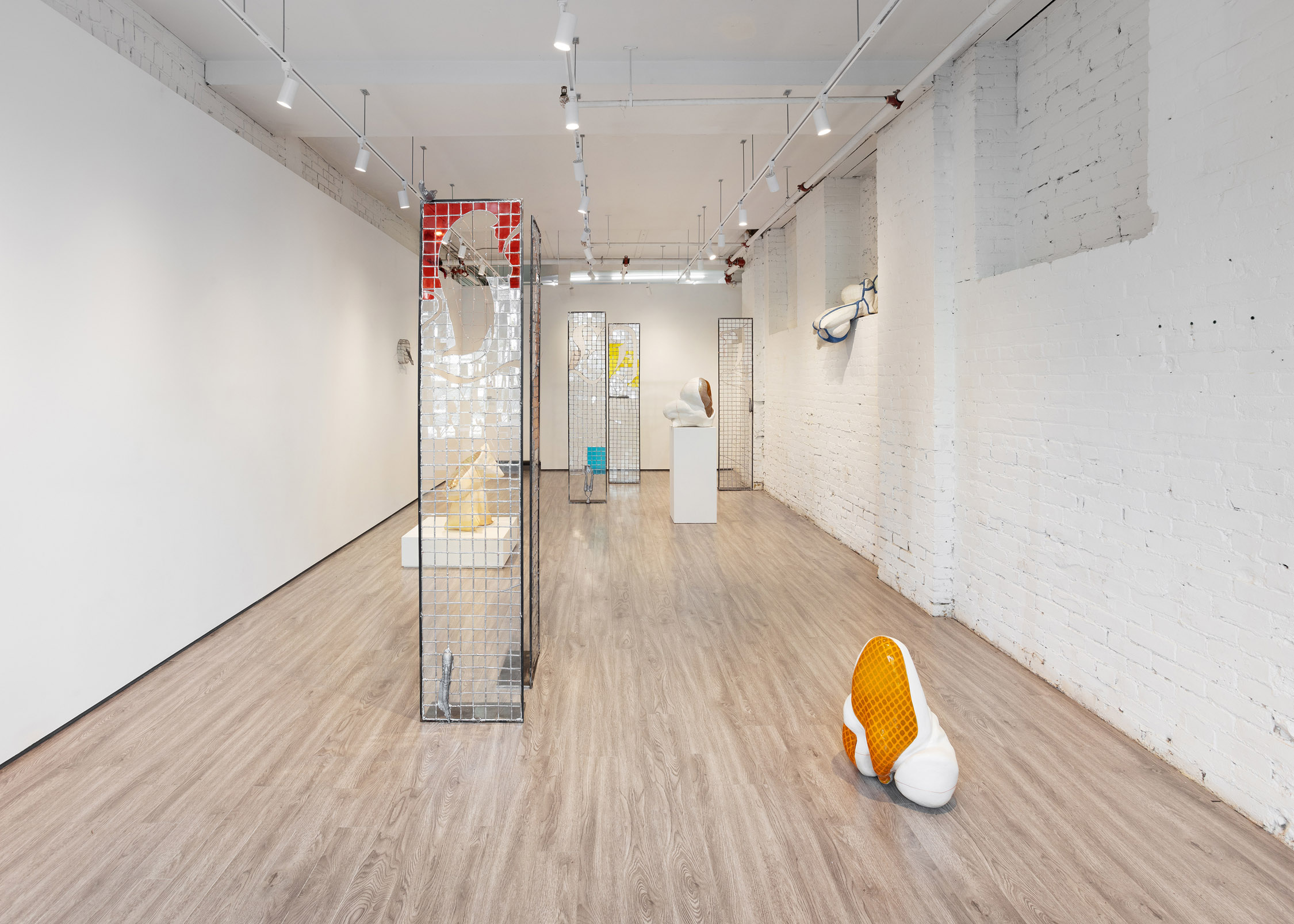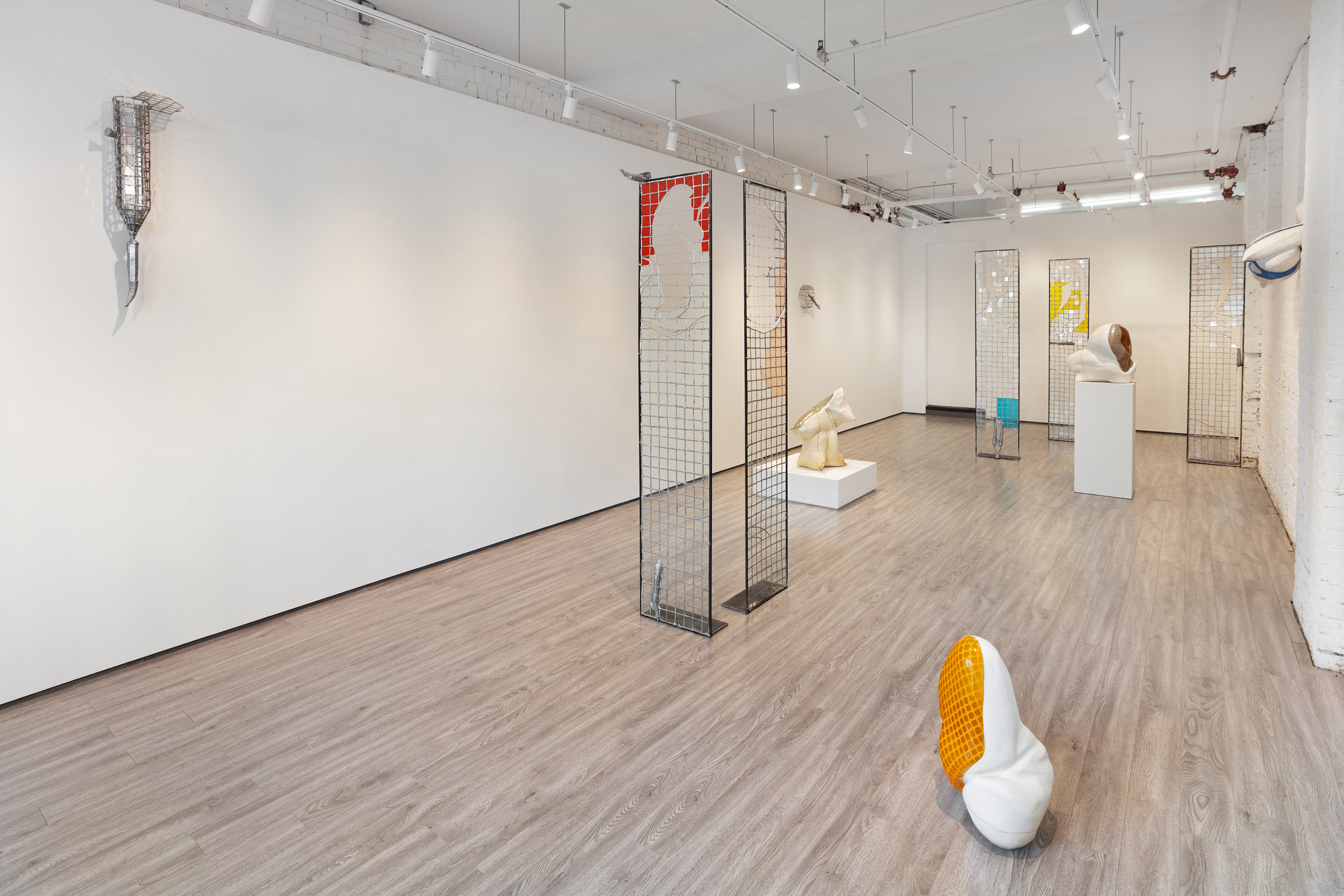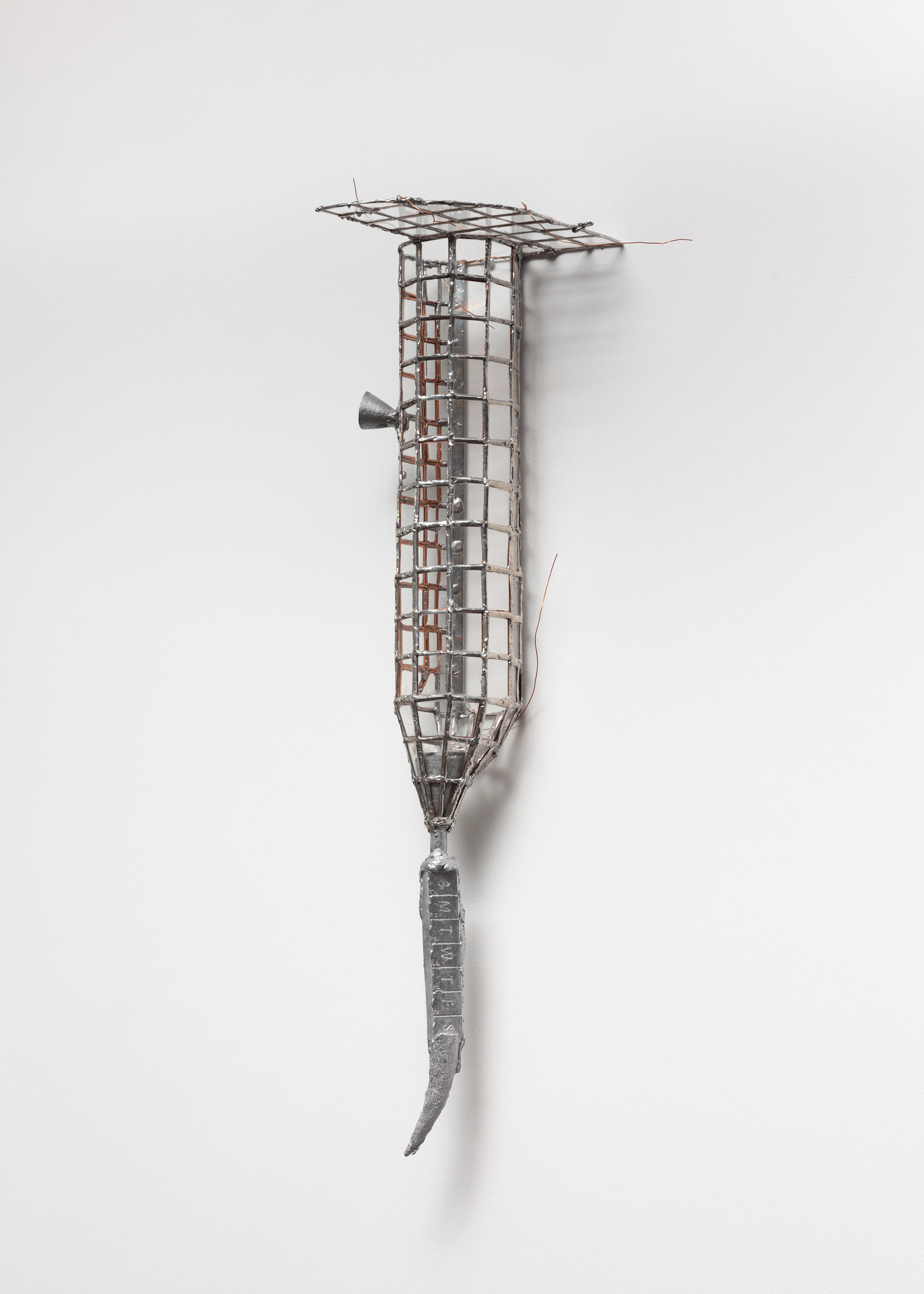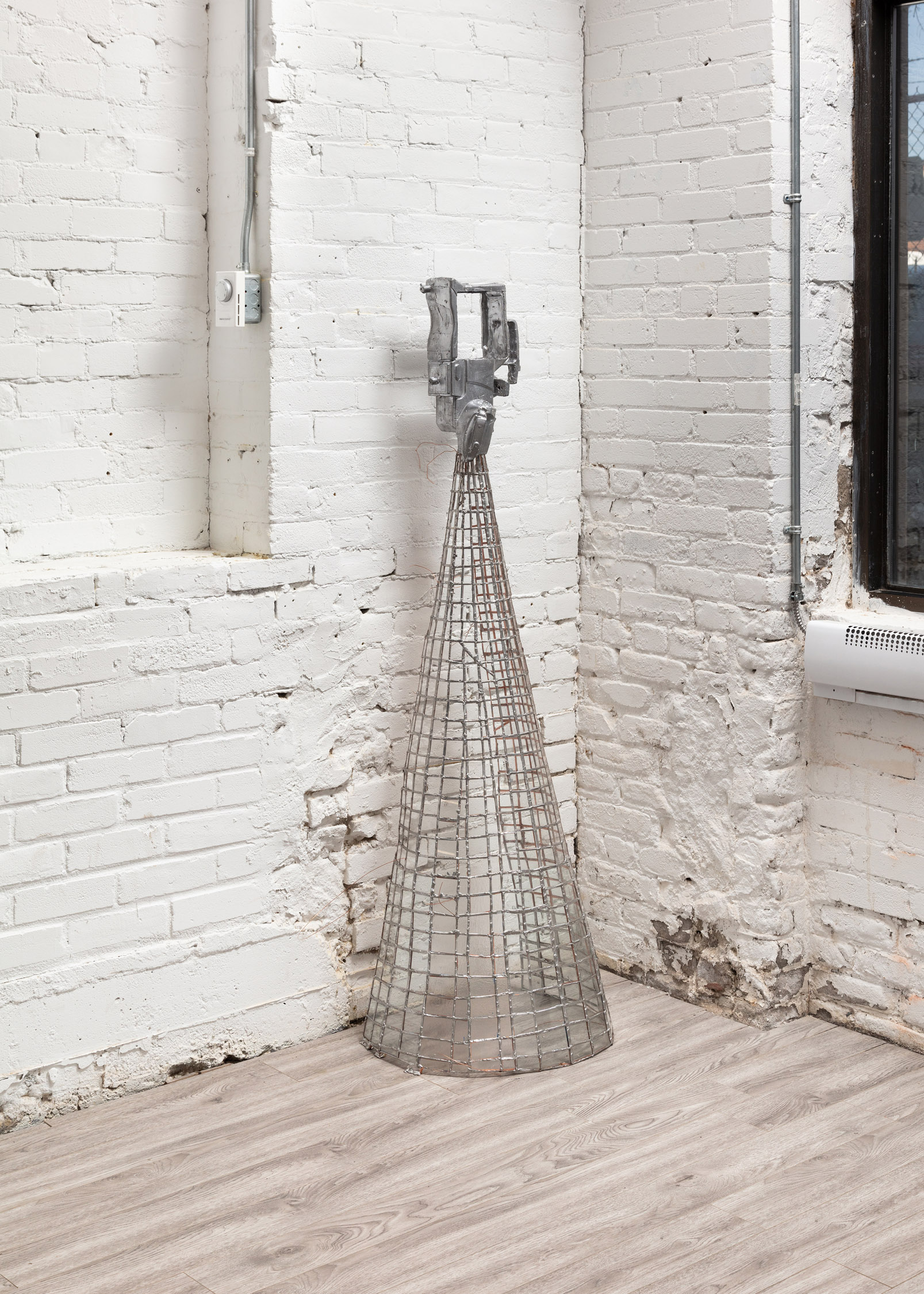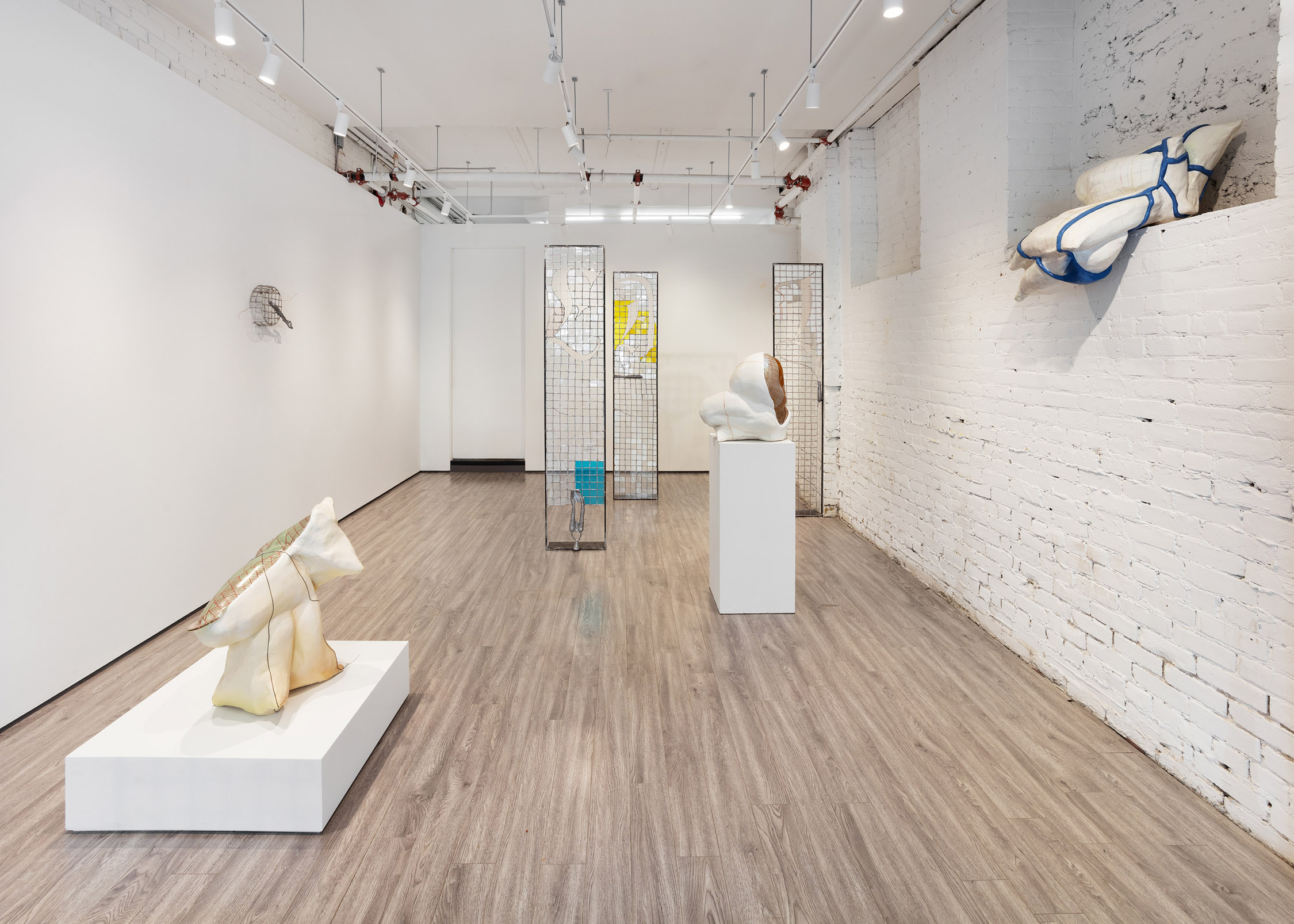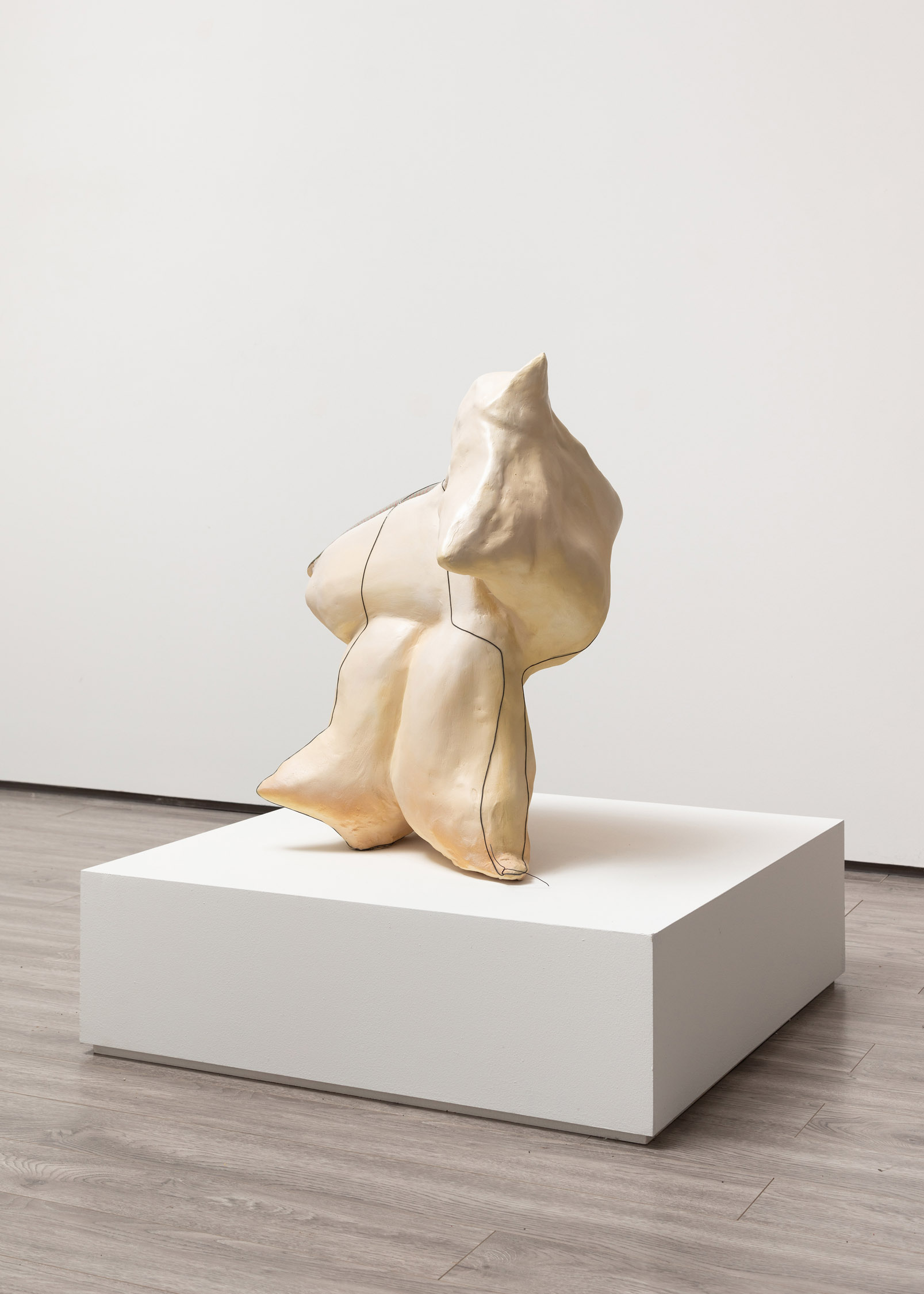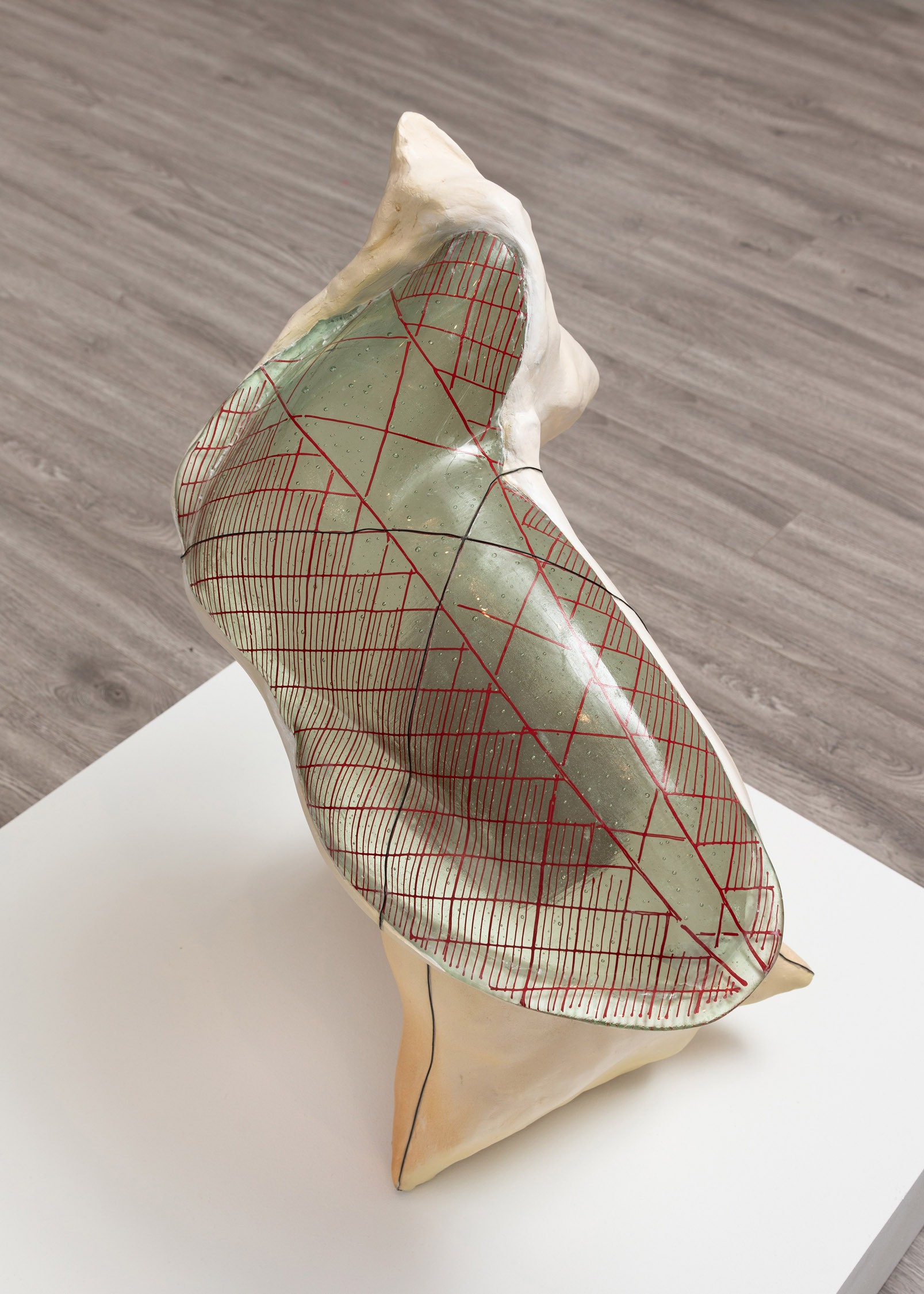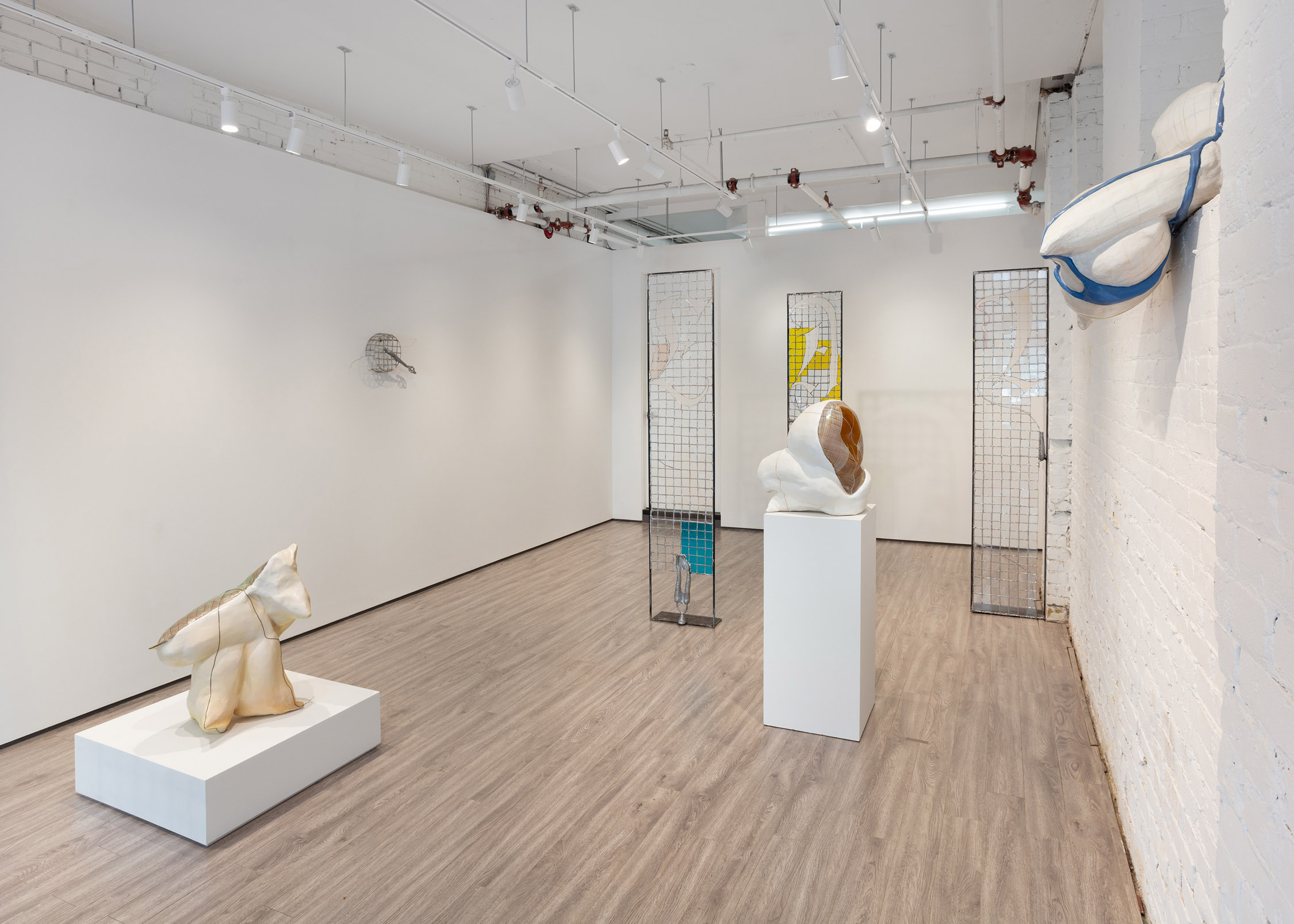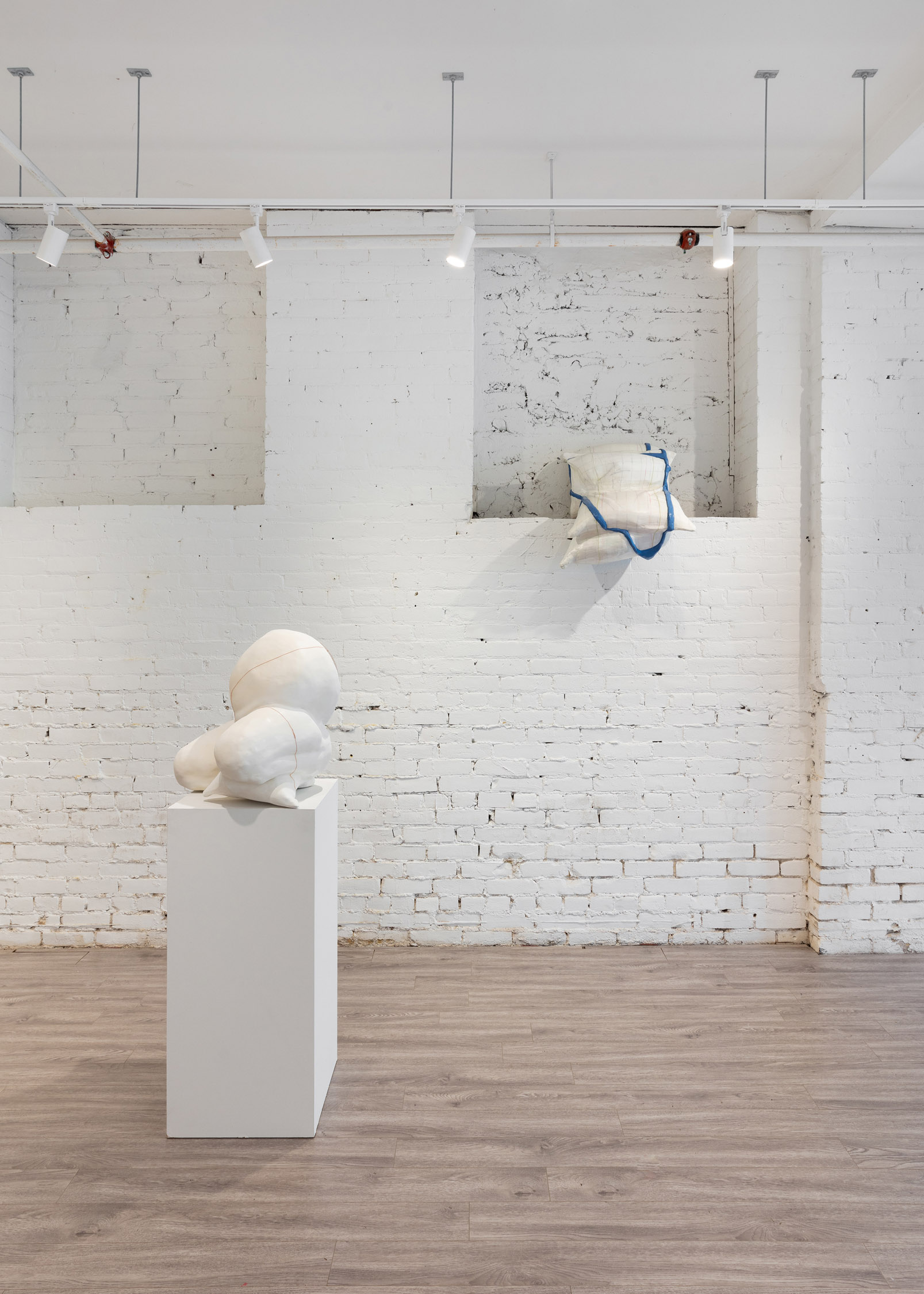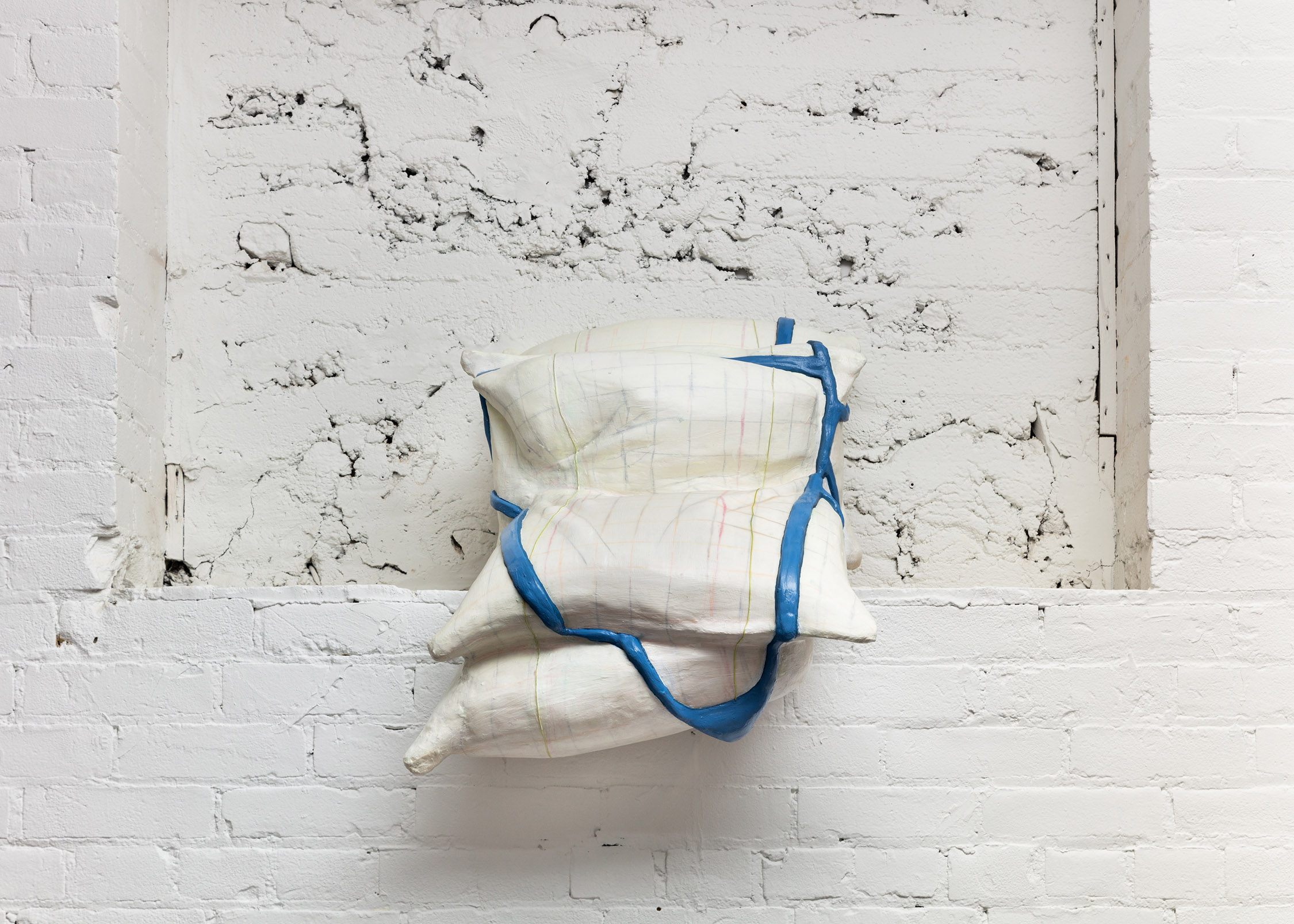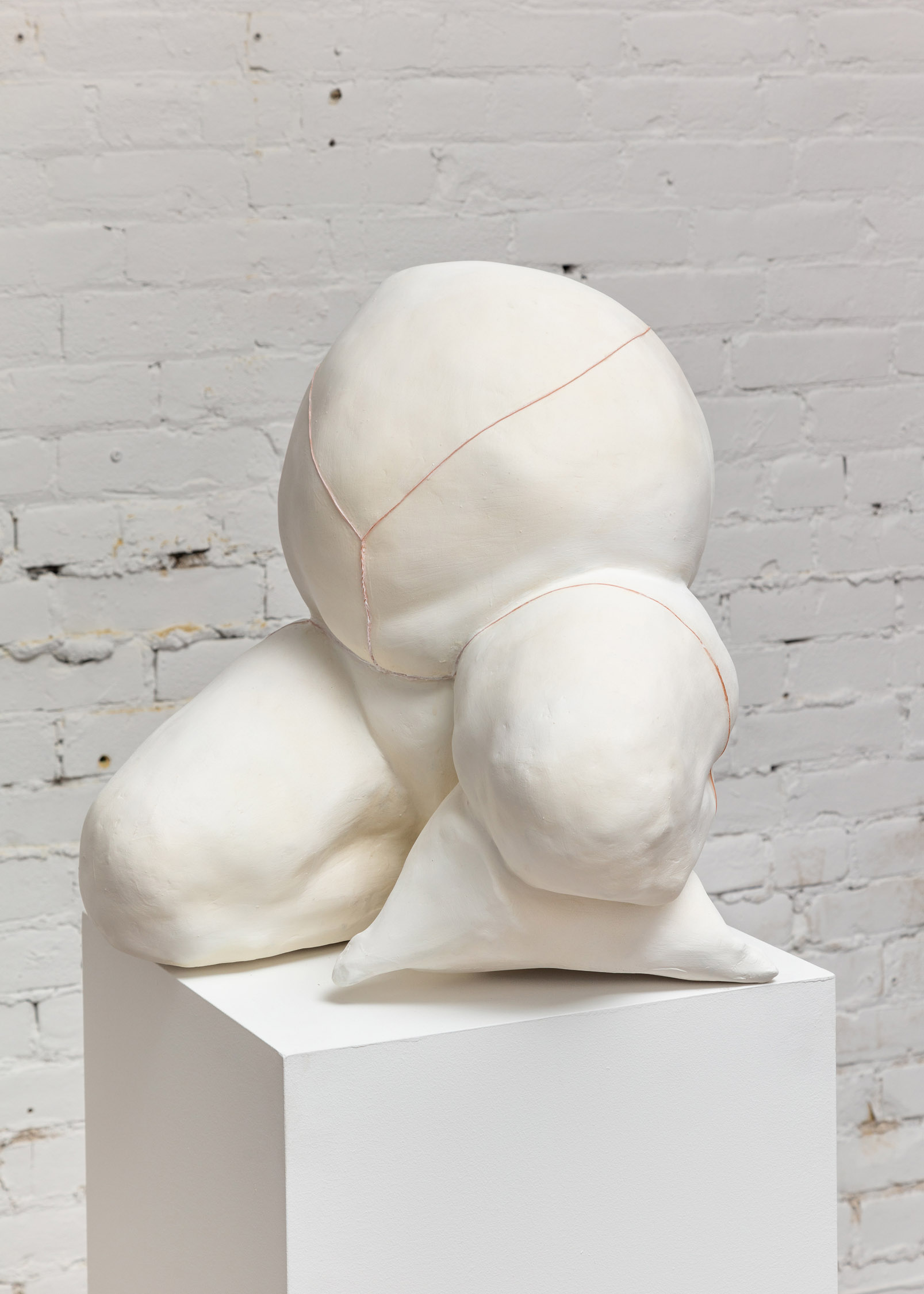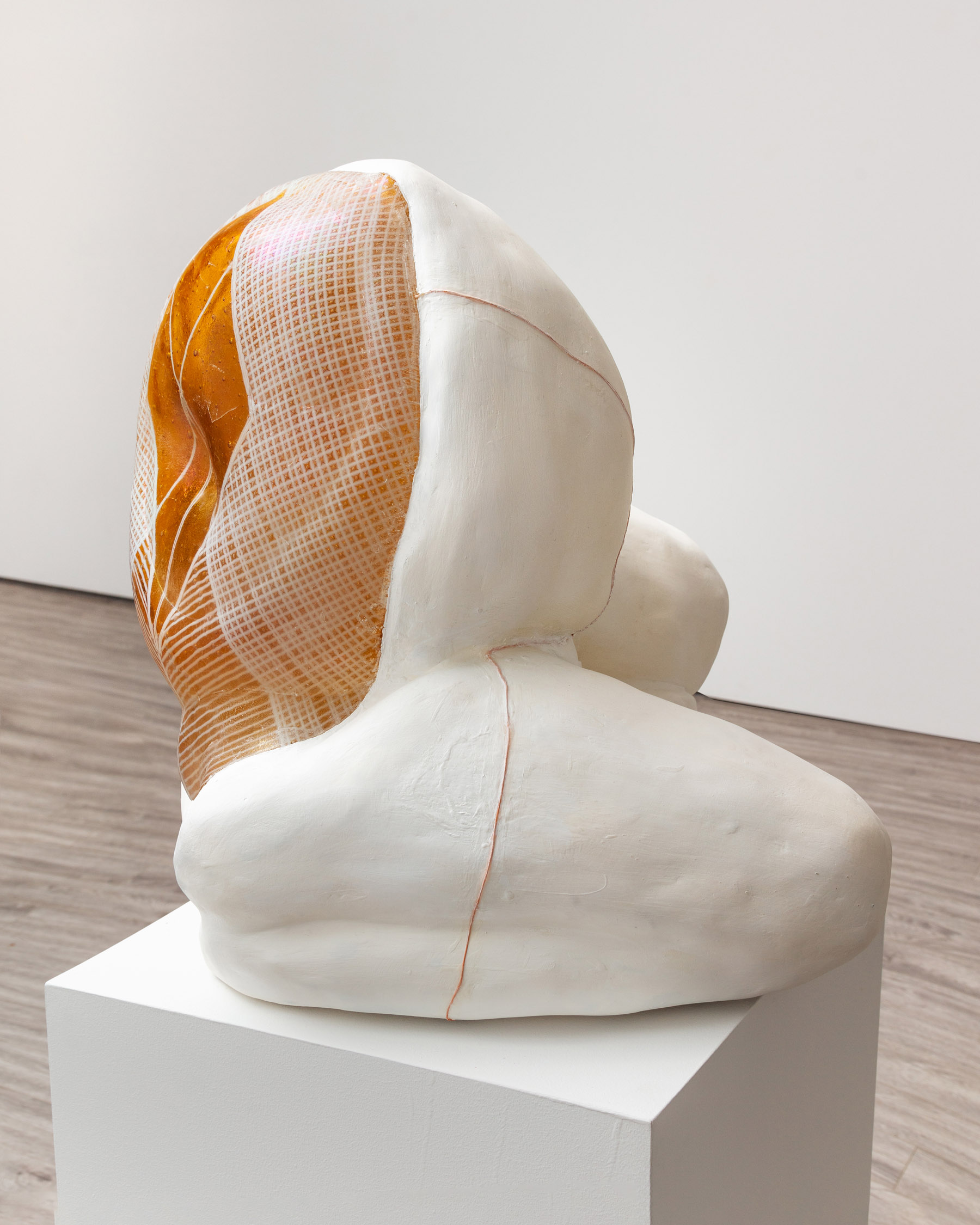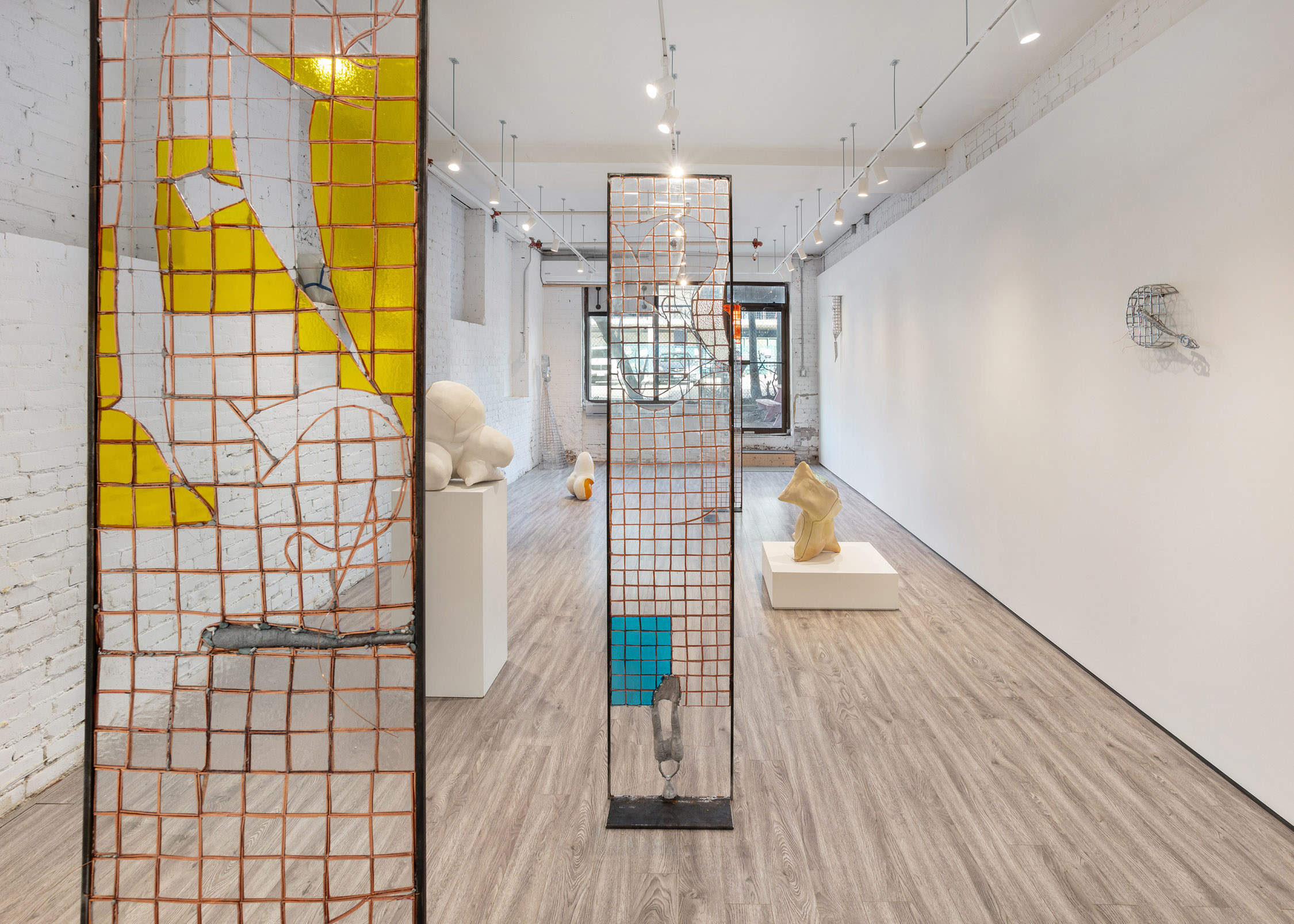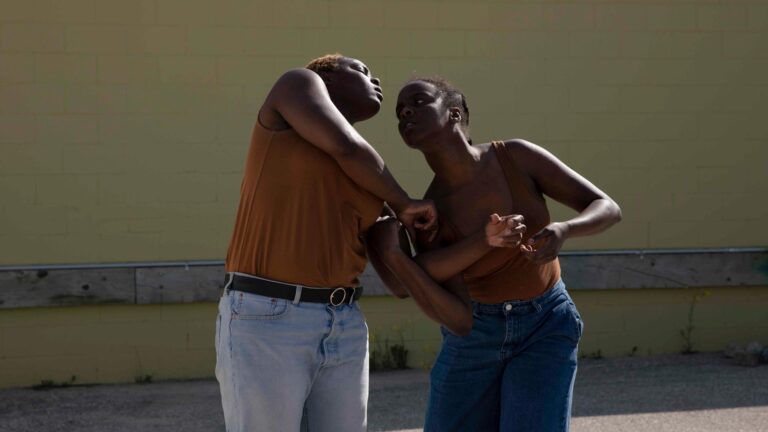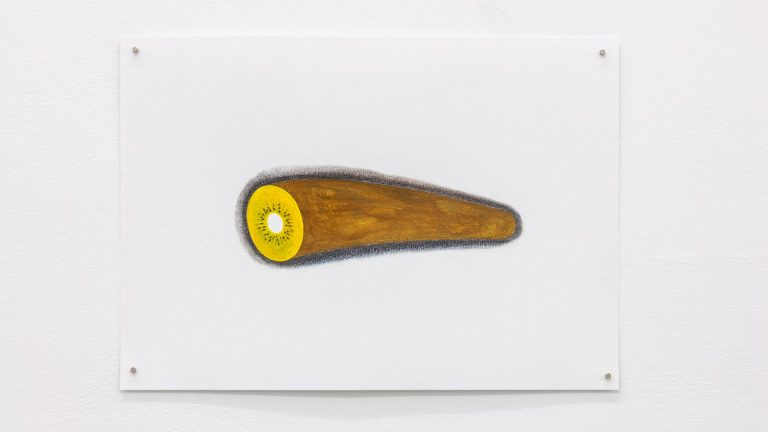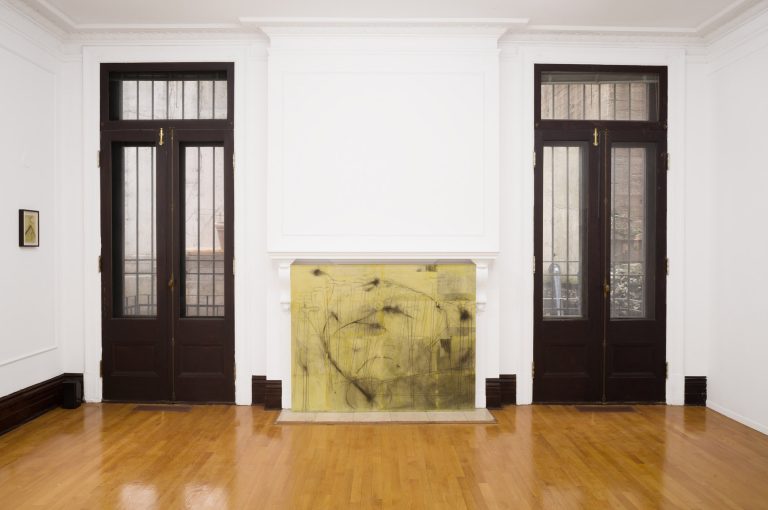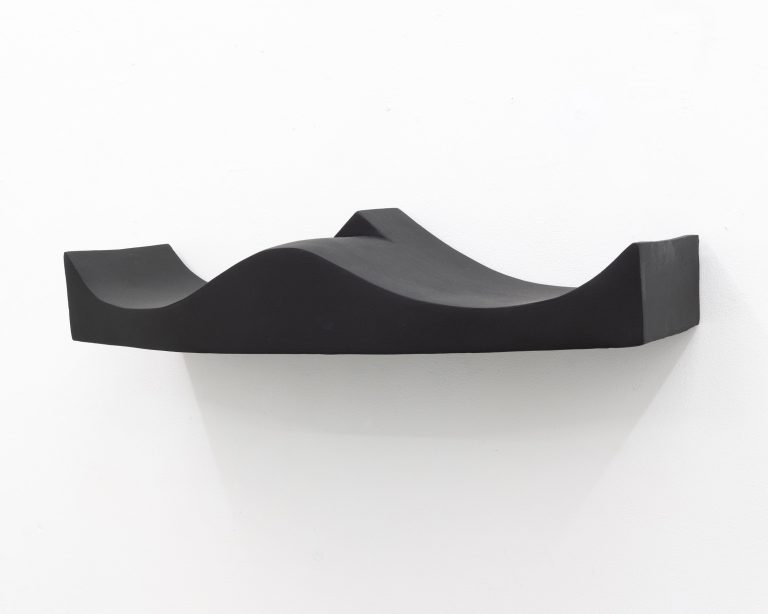Artist: Frances Adair Mckenzie
Exhibition title: Migraine Season
Venue: Towards, Toronto, Canada
Date: April 4 – May 11, 2024
Photography: all images copyright and courtesy of the artist and Towards, Toronto
Towards is proud to present Migraine Season, an exhibition of new work by Frances Adair Mckenzie.
An exhibition text by Paul Lofeodo follows:
“The worker is a split condition.”
— Jaleh Mansoor, Universal Prostitution: Francis Picabia’s Diagrams of Proletarianization, OCTOBER 185, p. 80
Crouching and contorting between screens or perched in ambiguous post-industrial alcoves, Frances Adair Mckenzie’s figures play games of visibility; both in terms of being seen and of overseeing.
Cadenced in stained glass, a disc inset with a metallic extrusion, like a minute hand–almost a ticking clock– beside its mechanomorphic funnel sibling–measuring and excreting language at its extremity for re-digestion–become temporal-linguistic machines which might administer and constrain the agency of the figures on the floor.
Measured and portioned in glass–the Cartesian flip side of the mechanomorphic clock and funnel–five screens portion and choreograph the space of the gallery. Perhaps didactic windows the figures must negotiate; the ‘IDEAL’ within and against which they gyrate and writhe. An ideal of cropped sight lines, of controlled perception: a linguistic window framing the view. Each carefully inscribed letter, a titillating fragment of a script for the figures to be subjected to or to appropriate; carrot and stick.
Mckenzie’s figures reveal themselves from behind these screens, and their very materiality too becomes transparent. The problems of visibility and legibility plague the ever-shifting perceptual status of these figures; their glass flesh disappearing into linework–like graph paper, fishnet stockings, or construction safety vest; labour scripts– inscribed upon it like clothing that can never be removed. These bodies disappear behind the signifier written onto them, becoming transparent, invisible under the obfuscating linework. The body’s inscription then, becomes more legible than the body itself; an emphasis so strong that it makes the whole unavailable. They selectively screen themselves off from the gaze: cut by window panes and contorting out of view, like a landscape stretching beyond sight. Presentation becomes an act of refusal as much as availability: emphasis can blind the surveyor by constraining the reach of their gaze.
In a perpetual tug-of-war between liberating occlusion–the emphasis on labour script protecting the private citizen from the gaze of capital power–and oppressive erasure–the totalising labour script emptying the private citizen out of themselves–the figures are run through the mill of discourse, laboring between self-abstraction and dissipating behind inscriptions: the very structure of social technologies. – Paul Lofeodo
Frances Adair Mckenzie is a sculptor and animator based in Tiohtià:ke/Montreal. She holds a BFA from Concordia University. Adair’s research into sculpture, digital materiality and its conceptual realms is expanded through rigorous studio practice and constant exploration of new technology and tools. How technology sees and influences the way we see is central to her thinking and practice. Experiments with stop-motion, 3D animation, virtual reality and stereoscopy leak out into her sculptural work. This digital foraging leads to questions regarding the stability of identity, production and consumption of desire and the surface tension between digital interfaces and architectural space.
Frances’ video work has been widely exhibited internationally, most notably at the Somerset House London, UK, The MAXXI museum in Rome, IT and TOKAS residency in Tokyo. Frances has exhibited at the Fonderie Darling, Parisian Laundry, Centre Clark and the Satosphere (SAT) in Montreal and towards Galery in Toronto. Two animations and a stop-motion virtual reality piece have been produced by the National Film Board. Her VR piece was nominated for a Prix Gémeaux in Quebec and won a Canadian screen award for best immersive fiction.
